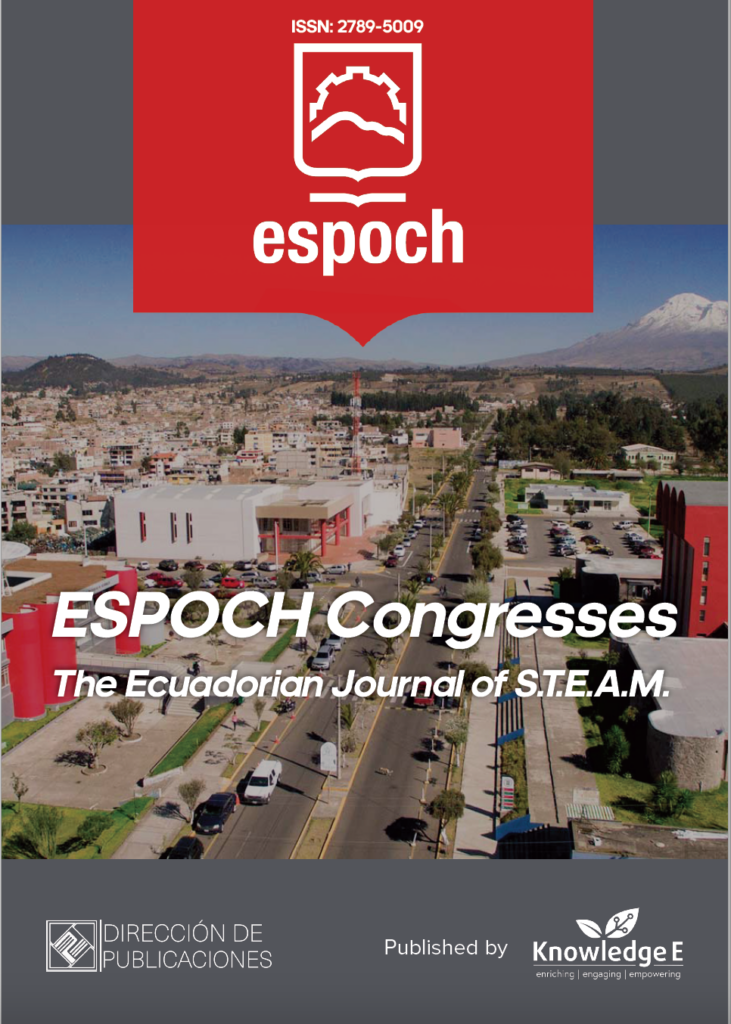
ESPOCH Congresses: The Ecuadorian Journal of S.T.E.A.M.
ISSN: 2789-5009
Leading Ecuadorian research in science, technology, engineering, arts, and mathematics.
Development of an Ackermann-type Mobile Platform for the Validation of Autonomous Navigation Algorithms within the ESPOCH Campus
Published date:Aug 31 2022
Journal Title: ESPOCH Congresses: The Ecuadorian Journal of S.T.E.A.M.
Issue title: Volume 2, Issue 4
Pages:160 - 1173
Authors:
Abstract:
The continual development of the automotive industry has evolved to astronomical levels, capable of promoting a new technological generation of several automated systems (both mechanical and electronic systems). As a result, a generation of autonomous vehicles – also known as intelligent vehicles – capable of avoiding human errors has emerged. In the present investigation, an Ackermann-type mobile prototype is used to validate autonomous navigation algorithms in different environmental conditions, which is developed by covering artificial vision stages such as the detection of the bicycle lane and traffic signals at scale. The control system consists of three parts – First is the detection algorithm through an artificial vision to collect information from the environment through a Pi camera that can later be processed through Python with its OpenCV tool. The second deals with the training of traffic signs (Stop and Speed Signage) through the Haar Cascade, as well as the detection of road lines through which various filters such as Canny, edge detection, and the transformation of Hough are executed on the Python platform with the OpenCV tool. The third part is the communication between the processing of the codes and their respective actuators (Motor, Servomotor) to finally collect the statistical data and validate the algorithms in the Ackerman-type mobile prototype.
Keywords: Python, OpenCV, Canny Filter, Hough Transform, Haar Cascade.
Resumen
El desarrollo constante de la industria automotriz evoluciono a niveles astronómicos capaz de impulsar una nueva generación tecnológica de automatización de varios los sus sistemas ya sean: mecánicos o electrónicos y así forma la generación de vehículos autónomos o llamados también vehículos inteligentes, capaces de evitar errores humanos al conducir. En la presente investigación se implementa un prototipo móvil tipo Ackermann para validar algoritmos de navegación autónoma en diferentes condiciones de su entorno que se desarrolle cubriendo etapas de visión artificial como la detección del carril de una ciclovía y señales de tránsito a escala. El sistema de control consta de tres partes, la primera parte es el algoritmo de detección por medio de visión artificial para recolectar información del entorno a través de una cámara Pi y posteriormente ser procesada a través de Python con su herramienta OpenCV. La segunda parte se encarga del entrenamiento de las señales de tránsito (Pare y Señalética de Velocidad) por medio de Haar cascade, además la detección las líneas de la carretera las cuales a través. de varios filtros como Canny, detección de bordes y la transformada de Hough todos estos filtros se lo ejecutan en la plataforma de Python con la herramienta de OpenCV, y la tercera parte es la comunicación entre el procesamiento de los códigos a sus respectivos actuadores (Motor, Servomotor) para finalmente recolectar datos estadísticos y Validar los algoritmos en el prototipo móvil tipo Ackerman.
Palabras Clave: Python, Open, Filtro Canny, Tranformada de Houg, Haar Cascade.
References:
[1] Punagin A, Punagin S. Analysis of lane detection techniques on structured roads using OpenCV. International Journal for Research in Applied Science and Engineering Technology. 2020;8:2994–3003.
[2] Rossi A, Ahmed N, Salehin S, Choudhury TH, Sarowar G. Real-time lane detection and motion planning in Raspberry Pi and Arduino for an autonomous vehicle prototype. arXiv [Preprint]. 2020: arXiv200909391.
[3] Bose S. Traffic detection using OpenCV. 2020. Available from: https://ssrn.com/abstract=3604892
[4] Farag W. Real-time detection of road lane-lines for autonomous driving. Recent Advances in Computer Science and Communications (Formerly Recent Patents on Computer Science). 2020;13(2):265–274.
[5] Monterrey Cañas ÁM, Sosa Ramírez CA. Diseño de un sistema de semaforización inteligente para controlar flujo vehicular a partir de procesamiento de imágenes. Colombia: Universidad Piloto de Colombia Sede Administrativa; 2020.
[6] Byeloborodov Y, Rashad S. Design of machine learning algorithms for behavioral prediction of objects for self-driving cars. In: 11th IEEE Annual Ubiquitous Computing, Electronics \& Mobile Communication Conference (UEMCON) [Internet]; 2020 Oct 28–31. p. 101–105.
[7] Olea JAR. Vehículo autónomo de configuración Ackermann para seguimiento de carril mediante procesamiento digital de imagen. Revista Científica Aristas. 2020;8(15):205–210.
[8] Chen Q, Chen Y, Zhu J, De Luca G, Zhang M, Guo Y. Traffic light and moving object detection for a guide-dog robot. Journal of Engineering. 2020;2020(13):675–678.
[9] Palacios O, Enrique R. Control adaptativo para el seguimiento de trayectorias de un robot móvilen carsim [master’s thesis]. México: Tecnológico Nacional de México Campus Tuxtla Gutiérrez; 2020.
[10] Sugue V, Jesús de J. Análisis de algoritmos de detección de características de OpenCV en Raspberry Pi [dissertation]. Spain: Universidad de Sevilla; 2020.
[11] Morales A, Junieth R. Reconocimiento de placas vehiculares aplicando procesamiento de imágenes digitales en Python-OpenCV [master’s thesis]. Nicaragua: National Autonomous University of Nicaragua; 2020.
[12] Flores Arrieta CD. Universidad Politécnica Salesiana Sede Quito [Internet,master’s thesis]. 2020. Available from: http://dspace.ups.edu.ec/handle/123456789/ 18503{%}0Ahttp://dspace.ups.edu.ec/bitstream/123456789/5081/1/UPS-CYT00109. pdf
[13] Bermejo JML. Características de la infraestructura que pueden favorecer la conducción asistida y automatizada. Rev Digit del Cedex. 2020;197:106–117.
[14] Alonso MAP, Succar LES, Balderas HJE, Erro LE, de Tonantzintla SM. Deteccion de novedades visuales basada en aprendizaje profundo para manejo autonomo. Mexico: INAOE; 2020.
[15] Llambo Yansaguano FB. Sistema electrónico de corrección del gesto deportivo en base a la biomecánica en deportistas de marcha atlética. Ecuador: Universidad Técnica de Ambato; 2020.